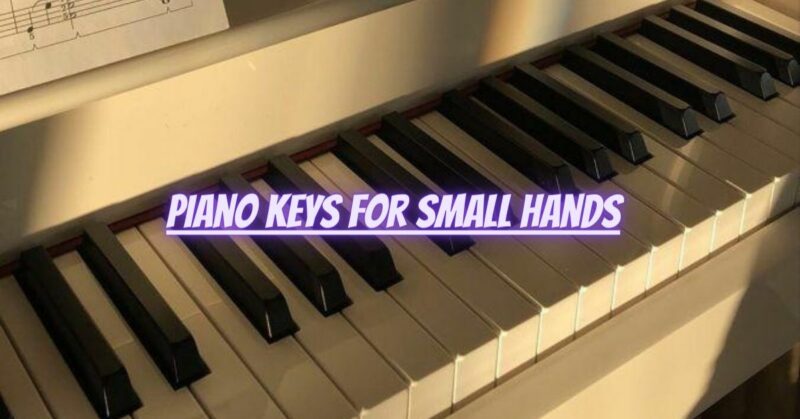Having small hands should never be a barrier to learning and enjoying the piano. While some pianists may find certain pieces or stretches more challenging, the size of your hands does not limit your ability to create beautiful music. In fact, many accomplished pianists with small hands have demonstrated extraordinary skill and artistry. In this article, we will explore practical tips and techniques to help pianists with small hands navigate the piano keys with ease and confidence.
1. Optimal Hand Position:
Maintaining proper hand position is crucial for pianists of all hand sizes. Keep your hands relaxed with your fingers gently curved, forming a natural bridge shape. Avoid tensing your hands, as this can hinder your playing and lead to discomfort.
2. Finger Technique:
Focus on using the finger pads to strike the keys, rather than the tips of your fingers. This technique provides better control and accuracy, allowing you to play with clarity and expression.
3. Finger Independence:
Piano keys exercises that develop finger independence are beneficial for all pianists, especially those with small hands. Practice finger drills and exercises that target each finger individually, helping to improve agility and coordination.
4. Finger Stretching Exercises:
Incorporate finger stretching exercises into your practice routine to gradually increase your hand span. Stretch your fingers gently and avoid straining or forcing them into uncomfortable positions. Over time, your flexibility will improve.
5. Playing with Rotation:
Using rotation in your wrist and arm movements can compensate for a limited hand span. Allow your hand to rotate slightly as you reach for notes, enabling you to cover a broader range of keys comfortably.
6. Finger Rolling Technique:
When playing chords or intervals, try a finger rolling technique, which involves playing the notes one after the other in a smooth motion. This technique can be particularly helpful for small-handed pianists in playing wider intervals.
7. Finger Substitution:
Practice finger substitution, where one finger replaces another on the same key without lifting it entirely. This technique aids in maintaining fluidity in your playing and facilitates smoother transitions between notes.
8. Pedaling Techniques:
Strategic use of the sustain pedal can help connect notes and create a fuller sound, compensating for limited hand spans in certain passages.
9. Adaptation and Arrangements:
Adapt pieces to suit your hand size by transposing or rearranging difficult sections. Work with your piano teacher or explore simplified arrangements that retain the essence of the music while accommodating your hand’s reach.
10. Embrace Your Unique Sound:
Remember that each pianist, regardless of hand size, has a unique sound and musical voice. Embrace your individuality and focus on expressing your emotions through the music you create.
Conclusion:
Having small hands should not discourage you from pursuing your passion for the piano. By adopting proper hand position, mastering finger techniques, and using strategic approaches, pianists with small hands can achieve remarkable results on the piano keys. Remember that music is about expression, joy, and the journey of continuous growth. Embrace your unique strengths as a pianist, and with dedication and determination, you will unlock the full potential of your musical talent. Happy playing!


